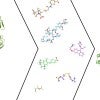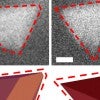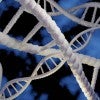Rice student helps fans make World Series memories
How many part-time college jobs put you smack-dab in the middle of the World Series?
Rice student helps fans make World Series memories
How many part-time college jobs put you smack-dab in the middle of the World Series?

Immigration topic of Baker Institute webinar
Policy experts will discuss the future of immigration reform and how to handle the 10.5 million people already living in the United States illegally at an upcoming webinar from Rice University’s Baker Institute for Public Policy.

Rice web server helps identify COVID-19 drug candidates
Rice University engineers are leading the development of a web server to help researchers judge the efficacy of their COVID-19 treatment candidates.

Rice talk to focus on Uyghur genocide in China
The history of the Uyghur homeland and the ongoing Uyghur genocide being carried out by the Chinese government will be the focus of a Nov. 4 event to be held from 1-2 p.m. in Kraft Hall 110.

Rice launches $2 billion capital campaign
Rice University has launched a comprehensive capital campaign to raise $2 billion by the end of 2025, by far the largest fundraising effort in the university's history.

Suspended students more likely to get caught up in juvenile justice system, and vice versa
Students who are suspended from school even once are much more likely to have contact with the juvenile justice system, according to new research from Rice University's Houston Education Research Consortium (HERC), which also shows that students who come in contact with the juvenile justice system are more likely to face suspension.

Rice Business ranked No. 3 for entrepreneurship by Poets & Quants
The Jones Graduate School of Business at Rice is No. 3 in new ranking.

Many Latinos chose virtual learning for children to minimize health risks to family, study shows
Many Latino families chose virtual learning for their children instead of returning to the classroom last fall in an effort to minimize health risks and protect vulnerable family members from COVID-19, according to a new study from a Rice University sociologist.

Rice Business’ annual diversity, equity and inclusion conference set for Oct. 29
Rice’s Jones Graduate School of Business will host the sixth annual Diversity, Equity and Inclusion Conference Oct. 29. The event is designed to provide a forum for awareness, dialogue and skill-building around DEI issues as they relate to the business world.

This pyramid scheme could be helpful
Rice chemists uncover the mechanism behind controlled growth of gold tetrahedron nanoparticles using liquid cell transmission electron microscopy.

Pandora Papers and Mexico topic of Baker Institute webinar
The Pandora Papers — almost 12 million documents and files exposing the secret dealings of political leaders, royalty, bureaucrats, billionaires and others — and their implications for Mexico will be examined in an upcoming webinar from the Center for the United States and Mexico at Rice University’s Baker Institute for Public Policy.

Training for health certificates dramatically boosted Hispanic employment and income
Short-term training programs for health care careers significantly boosted employment and income for Hispanics involved in a new study from Rice University, helping them overcome long-standing achievement gaps exacerbated by the COVID-19 pandemic.

The ethics of studying ancient DNA: Rice scholar helps craft global guidelines
Geneticists and archaeologists studying ancient DNA should engage with stakeholders in the places where they conduct research, minimize damage to human remains and share their data, according to new guidelines outlined in a paper co-authored by a Rice University anthropologist and published today in Nature.

Rice’s Baker Institute among finalists for Climate Challenge Cup
An innovative project led by Rice’s Baker Institute for Public Policy is among 12 finalists named today in the first international Climate Challenge Cup competition. The winners will be announced at an innovation showcase and ceremony Nov. 10 at COP26, the United Nations 2021 Climate Change Conference in Glasgow, Scotland.

HP CEO to discuss future of science and technology sector, impact of remote work
Antonio Neri, president and CEO of Hewlett Packard Enterprise — which recently relocated its global corporate headquarters to the Houston area — will discuss the role of funding in scientific innovation and the future of science and technology companies in an upcoming webinar from Rice’s Baker Institute for Public Policy.